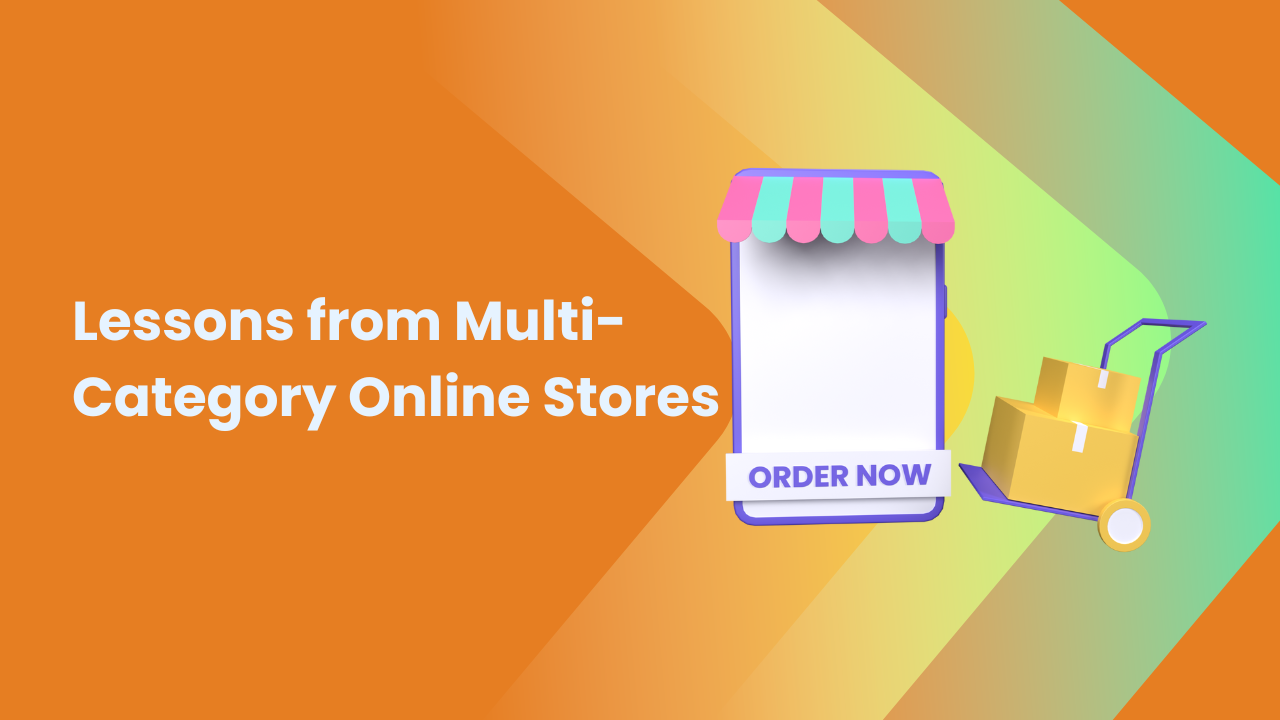Share this Article
Scaling a business from a humble beginning to millions of sales is one of the most exciting, yet challenging goals for any entrepreneur. It’s a journey that requires careful planning, strategic growth, and a deep understanding of your market and customer base. Whether you're just starting or have already made your first sale, scaling involves not only increasing the number of sales but also building systems that ensure sustainable growth, operational efficiency, and long-term profitability.
For entrepreneurs in Nepal, the e-commerce industry offers an incredible opportunity. With growing internet penetration, a shift toward online shopping, and increasing trust in digital transactions, there has never been a better time to scale a business. However, scaling requires more than just acquiring customers; it involves creating a robust infrastructure, building a strong brand, and ensuring that your operations can keep up with the increased demand. This guide will outline the necessary steps and strategies to help you scale your business from 1 sale to 1 million sales in the context of Nepal’s 2025 e-commerce landscape.
1. Build a Solid Foundation
The first step in scaling your business is to ensure you have a strong foundation. This means having a business model that works, a product or service that people want, and the processes in place to support growth. Before diving into the complexities of scaling, take a step back and review the basics.
Develop a Market-Driven Product or Service
One of the most important aspects of growing your business is ensuring that your product or service addresses a real market need. In Nepal, where there is a growing demand for both locally made and international products, it’s crucial that your product meets customer expectations. Whether you're selling handcrafted jewelry, Nepali organic food products, or modern technology, ensure your offering solves a specific problem or fulfills a desire for your target audience.
For example, if you are offering eco-friendly products, your product should be able to meet the increasing demand for sustainable goods in the Nepali market. Knowing what your customers value will help you design products that are not only unique but also in demand.
Test Your Concept with Early Customers
Before attempting to scale your business, it's essential to understand how your product resonates with customers. One effective way to test your market fit is through pilot launches, pop-up events, or small-scale online offerings. Customer feedback is invaluable at this stage, and understanding what people like or dislike about your product can help refine your offerings. For instance, if you're selling locally made handicrafts, asking customers for their opinions can help improve the designs, quality, or pricing.
By testing and gathering feedback, you can refine your product and ensure that you’re offering something that truly meets market demand.
2. Master Customer Acquisition
Once you have a product that people love, the next step is to acquire more customers. Customer acquisition is the key to scaling your business. You need a plan that effectively attracts and retains customers while providing a seamless experience from discovery to purchase.
Focus on Digital Marketing
In Nepal, digital marketing is a game-changer. With the increase in internet usage and the popularity of mobile phones, many Nepali consumers are now more comfortable shopping online. Social media platforms like Facebook, Instagram, and TikTok play a significant role in reaching potential customers, especially the younger generation.
Start by creating a strong presence on social media. Share engaging content that educates your audience about your products, tells your brand story, and showcases customer success stories. For instance, if you're selling Nepali handmade crafts, you can post about the artisans behind the products, the materials used, and the benefits of buying locally produced items.
Invest in Search Engine Optimization (SEO)
Another key element of customer acquisition is search engine optimization (SEO). In Nepal, people are increasingly turning to Google and other search engines to find products online. By ensuring that your website is optimized with the right keywords, you can increase your chances of appearing in search results when potential customers are looking for products similar to yours.
Use keywords that are specific to your niche and geographic location. For instance, if you are selling Nepali herbal teas, you might use keywords like “Nepali herbal tea online,” “organic tea from Nepal,” or “best tea in Nepal.” Optimizing your content with these keywords will help drive organic traffic to your website.
Leverage Influencer Marketing
Influencer marketing is becoming a powerful tool in Nepal’s e-commerce ecosystem. Influencers have the ability to connect with audiences on a personal level, and when they recommend your products, it adds credibility to your brand. Consider partnering with local influencers or micro-influencers who have an engaged audience that fits your target demographic.
By working with influencers who share your brand values, you can extend your reach, build trust, and drive sales. For example, if you're selling traditional Nepali clothing, you could collaborate with fashion influencers in Nepal who focus on local fashion.
Referral Programs and Word-of-Mouth Marketing
Word-of-mouth marketing is one of the most effective ways to acquire new customers, especially in a country like Nepal, where personal recommendations are highly valued. Consider implementing a referral program where existing customers can refer friends or family in exchange for discounts or rewards. This not only helps you grow your customer base but also encourages repeat business.
3. Create a Seamless Customer Experience
The customer journey doesn't end with the first sale. As you scale your business, it’s important to continue providing exceptional customer experiences. A seamless customer journey ensures that buyers come back for more and recommend your business to others.
User-Friendly Website and Mobile Optimization
In Nepal, where mobile phone usage is prevalent, it’s critical that your website is optimized for both desktop and mobile devices. Customers should be able to browse, shop, and check out easily, whether they are on a smartphone or a laptop. Your website should be fast, easy to navigate, and have clear calls to action. A complex or slow website could lead to cart abandonment, which negatively impacts your sales.
Easy and Secure Checkout Process
Make the purchasing process as straightforward as possible. Offering multiple payment options, such as credit/debit cards, e-wallets, and cash on delivery (COD), is important in Nepal, where cash payments remain popular. Ensure that your website uses secure payment gateways to reassure customers about the safety of their financial information.
Additionally, streamline your checkout process by minimizing the number of steps required to complete a purchase. This reduces friction and makes it easier for customers to convert.
Customer Support and Communication
Prompt customer support is essential in retaining customers and building loyalty. Provide various channels through which customers can reach you, including live chat, email, and phone support. In Nepal, where customers often have specific inquiries regarding product quality or delivery status, providing quick and helpful responses is crucial.
4. Automate and Optimize Operations
As your business grows, manual processes become less sustainable. Automation can help you manage operations more efficiently, giving you more time to focus on scaling.
Inventory Management Tools
Managing inventory can become complicated as your sales volume increases. Using an inventory management system that integrates with your e-commerce platform helps you keep track of stock levels, avoid stockouts, and optimize your supply chain. This is especially important in Nepal, where logistics can be challenging in rural areas. Automating inventory management helps prevent overstocking or understocking, ensuring that you have the right products available when customers demand them.
Marketing Automation
Marketing automation tools allow you to schedule social media posts, send personalized emails, and track customer engagement without needing to manually oversee every campaign. By automating marketing tasks, you can ensure consistent communication with your audience, helping to nurture leads and drive conversions.
Customer Relationship Management (CRM) Software
A CRM system can help you track customer interactions, manage sales leads, and segment your audience. This allows you to personalize your communications, offer targeted promotions, and build stronger relationships with your customers. In Nepal, where personal connections are highly valued, CRM software can help you keep track of customer preferences and create a more tailored experience.
5. Build a Strong Brand Identity
A strong brand is a key factor in scaling your business. In Nepal, where local and traditional values are important, your brand identity should reflect authenticity, reliability, and cultural significance.
Create a Unique Brand Story
Customers connect with brands that have a compelling story. Whether you’re selling Nepali handicrafts, local foods, or technology, make sure your brand story resonates with your target audience. Tell them about your journey, why you started the business, and how your product or service makes a difference in their lives. A well-crafted brand story will foster emotional connections with your customers, encouraging loyalty and repeat purchases.
Consistency Across All Platforms
Ensure consistency in your branding across all channels, including your website, social media, packaging, and marketing materials. Your brand voice, logo, and messaging should be uniform to build recognition and trust.
Community Engagement
Engage with your customers and create a sense of community around your brand. In Nepal, where community and relationships are essential, building a loyal customer base through regular interactions can be a powerful tool for scaling. Organize events, promote local causes, and involve customers in your business activities to strengthen brand loyalty.
6. Expand Your Product Offering
Once you have established a solid customer base, consider expanding your product line to meet a broader range of needs. By diversifying your offerings, you can increase your average order value and attract new customer segments.
Introduce Complementary Products
If you are selling one product category, think about offering complementary products. For example, if you sell Nepali clothing, you could expand into accessories such as jewelry, bags, or scarves. This allows you to upsell and cross-sell, increasing your overall revenue.
Look into International Markets
As your business grows, consider expanding beyond Nepal to cater to international customers, especially Nepali expatriates living abroad. Platforms like Amazon, eBay, and Etsy provide access to a global market, making it easier for Nepali entrepreneurs to reach customers worldwide. This is especially relevant for products with cultural or artisanal value, such as Nepali crafts, jewelry, or organic food items.
7. Monitor and Optimize for Continuous Growth
Scaling is an ongoing process that requires constant monitoring and adaptation. Track your key performance indicators (KPIs) regularly to measure your business's health and identify areas for improvement.
Analyze Customer Data
Customer data is a goldmine for scaling your business. By understanding purchasing patterns, preferences, and feedback, you can optimize your marketing strategies, improve product offerings, and increase customer satisfaction.
Optimize Your Marketing Campaigns
Constantly analyze the performance of your marketing campaigns to see what works and what doesn’t. If you find that certain marketing tactics aren’t yielding results, adjust them to be more effective. In Nepal, where the market is still evolving, being flexible and adapting to new trends is crucial for sustained growth.
Stay Innovative
Finally, always stay on top of industry trends and technological advancements. The e-commerce landscape is rapidly evolving, and staying innovative will ensure that your business remains competitive as you scale.
Conclusion: The Path to Scaling Success
Scaling a business from one sale to one million sales requires a combination of strategy, hard work, and persistence. By building a strong foundation, acquiring customers, automating operations, and continuously optimizing your processes, you can achieve your growth goals. In Nepal’s fast-changing e-commerce environment, taking advantage of digital marketing, leveraging technology, and building a unique brand identity will help you scale effectively.
Remember, scaling is a journey that requires constant learning and adaptation. By staying focused on your goals and being open to new opportunities, you can build a business that stands the test of time and achieves remarkable success.
Categories:
E-commerce Tips & Tutorials
Tags:
NepalBusinessTips







